Exploring Reportage Properties in Dubai's Real Estate
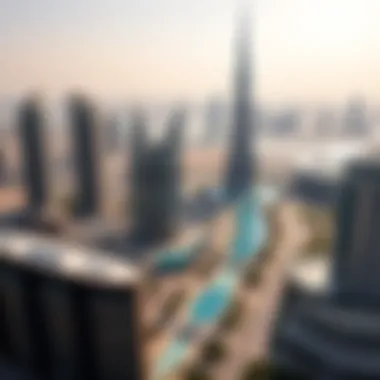
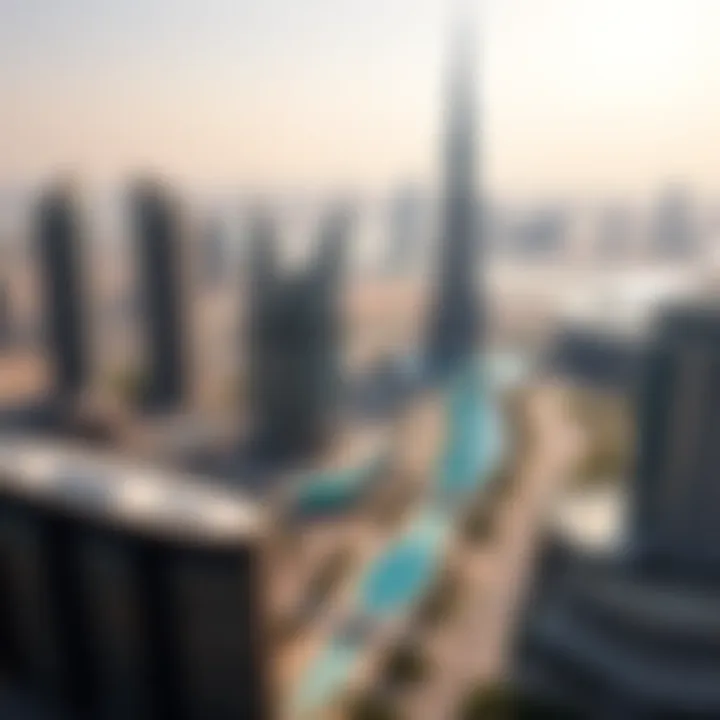
Intro
In the sprawling metropolis of Dubai, the real estate sector dances to a unique rhythm, particularly when it comes to reportage properties. These properties, characterized by their detailed reporting and transparency, have captured the attention of buyers and investors alike. Understanding this facet of the market requires a closer look at various elements that define the current landscape, including buyer preferences, market trends, and key insights that can help stakeholders navigate the waters intelligently.
The urgency to explore such properties is underscored by the growing recognition of their value, not just in terms of investment potential but also how they reshape ownership standards in this fast-paced environment. As each neighborhood brings its own flavor and distinct offerings, a comprehensive review will serve to enlighten both newcomers and seasoned players in the market.
This write-up aims to provide a well-rounded perspective, guiding readers through the matrix of buyers' needs, sellers' strategies, and essential insights for successful property engagements. A clearer picture emerges when all elements are considered together, presenting an opportunity for stakeholders to make more informed decisions.
Property Market Overview
Current Market Trends
The Dubai real estate market has undergone significant transformations in recent years. As we examine the current landscape, several key trends emerge. The demand for reportage properties is on the rise, driven by a blend of local and international buyers seeking transparency and reliability in their investments.
- Increased Investor Interest: Many investors are particularly drawn to properties with thorough reporting, as it assures them that their investment is in a stable and growing location.
- Sustainability Practices: More buyers are leaning towards properties that incorporate green building practices and sustainable resources, blending modern living with environmental consciousness.
- Digital Innovations: Technology is paving the way for virtual tours and online transactions, streamlining the buying process, and adapting to the fast-paced lifestyle of potential purchasers.
"The modern buyer is no longer just looking for a place to live; they want to feel secure in their investment and know that their property aligns with their values."
Key Neighborhood Insights
Dubai's neighborhoods boast diverse characteristics that significantly influence buyer decisions in the reportage market. Each area presents unique advantages and challenges:
- Downtown Dubai: Centered around iconic landmarks like the Burj Khalifa, this area is a showstopper. The blend of luxury and accessibility captures many high-profile investors.
- Dubai Marina: Known for stunning waterfront views, properties here encapsulate a vibrant lifestyle. With numerous amenities, it appeals largely to expats and young professionals.
- Jumeirah Lake Towers (JLT): JLT offers a balance of affordability and luxury. Its family-friendly environment makes it an attractive option for longer-term residents.
Understanding the dynamics of these neighborhoods is vital in aligning properties with potential buyers' expectations.
Buying and Selling Guidelines
Essential Steps for Buyers
Purchasing a reportage property in Dubai can be a streamlined experience when buyers follow key steps:
- Research Thoroughly: Before diving into any decisions, prospective buyers should conduct comprehensive research on available properties, focusing on individual needs as well as market conditions.
- Engage a Real Estate Agent: Professional guidance can be invaluable. A knowledgeable agent can provide insights that streamline the buying experience, helping navigate complicated legalities and negotiations.
- Analyze Financial Implications: Understanding costs beyond the property price—including maintenance fees, property taxes, and potential appreciation—will influence overall investment satisfaction.
- Secure Financing: Buyers should assess their financing options early. Dubai banks offer various mortgage plans tailored to differing circumstances.
Tips for Sellers
Sellers also need to employ strategic approaches to attract the right buyers:
- Highlight Transparency: Given the increasing demand for reliable reporting, ensuring that accurate and transparent information accompanies all listings can instill confidence in potential buyers.
- Stage the Property: A well-presented home stands out. Sellers should consider staging their properties to highlight strengths effectively.
- Market Smartly: Utilizing digital platforms and social media in the marketing process can reach a broader audience and capitalize on current market trends.
The interplay of insights into both buying and selling can cultivate a balanced environment in the reportage property market, leading to fruitful outcomes for all stakeholders.
In summary, by keeping an eye on current trends, understanding neighborhood specifics, and diligently following guidelines, investors, buyers, agents, developers, and sellers can successfully navigate the exciting landscape of Dubai's real estate sector.
Prelims to Reportage Properties
Understanding reportage properties is crucial for those navigating Dubai's vibrant real estate scene. These properties are not merely structures; they embody a unique architectural mindset tailored to fulfill modern demands. With the skyline constantly evolving, awareness of what constitutes a reportage property helps buyers, investors, and developers grasp the overarching trends and opportunities present in the market.
For investors, recognizing the distinctive features of reportage properties can mean the difference between a smart investment and a regrettable oversight. Such properties often integrate sustainable practices, innovative designs, and efficient use of space. These elements foster an environment that attracts discerning tenants and buyers alike, thereby driving market demand and creating lucrative opportunities.
Defining Reportage Properties
At its core, reportage properties encompass dwellings or commercial structures that foreground specific narratives or themes in their design and function. These buildings often resonate with local culture or reflect current societal challenges and aspirations. Unlike traditional properties that may prioritize uniformity and tradition, reportage properties delve into a more exploratory realm. They engage with architectural storytelling, each design decision reflecting a deeper motif that speaks to history or future perspectives.
The defining characteristics typically include:
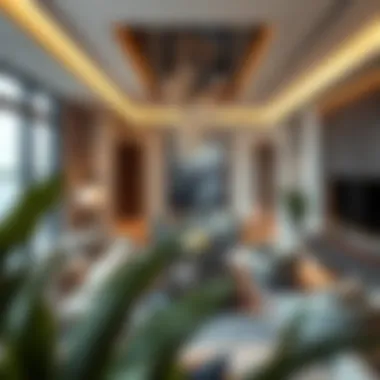
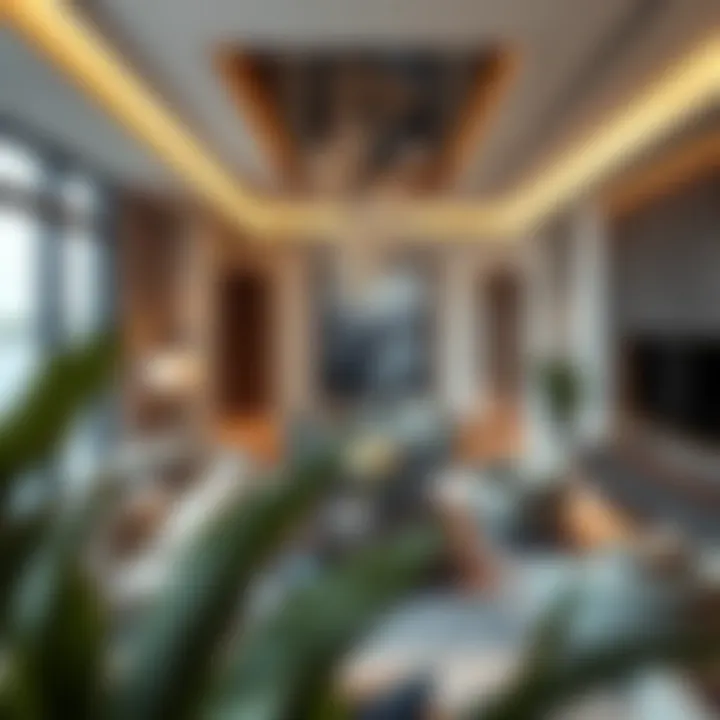
- Innovative Design: The architecture often showcases originality and creativity.
- Cultural Relevance: There is a strong connection to local traditions or contemporary issues.
- Flexible Spaces: Reportage properties often prioritize adaptability in their layouts to suit a variety of uses.
Historical Context and Development
To fully appreciate the significance of reportage properties today, one must look back at how they came to be. The term 'reportage' originally references journalistic storytelling. This concept mirrored itself in architecture starting in the late 20th century, where architects began to feel a shift towards narrative-driven designs. As the world faced rapid urbanization and technological advancements, a new breed of architects sought to redefine the space through story and context.
In Dubai, specifically, the evolution of these properties coincided with the city's transformation into a global hub. With its melting pot of cultures, there was a burgeoning demand for properties that not only served physical purposes but also told stories that resonated with residents and visitors alike. Today, Dubai’s skyline features an array of reportage properties, blending functionality with narrative, which reflects the city's ethos of progress, diversity, and sustainability.
"Modern architecture is not just about form; it’s about the causes it represents."
In summary, the exploration of reportage properties provides invaluable insights into the evolution of architectural practices that communicate deeper meanings. As investors, buyers, and agents shift towards these contextual and meaningful designs, the relevance of understanding such properties becomes profoundly evident in navigating this dynamic market.
Characteristics of Reportage Properties
Understanding the characteristics of reportage properties is crucial for anyone involved in Dubai's real estate sector. These properties offer unique features that distinguish them from traditional residential or commercial buildings. The importance of recognizing these traits lies in their potential for attracting various types of buyers and investors. This section delves into specific elements such as architectural features, location significance, and sustainability aspects, all of which contribute to the appeal and value of reportage properties.
Architectural Features
The architectural design of reportage properties stands out as a defining characteristic. Often modeled on modernist principles, these buildings incorporate innovative designs that emphasize functionality and aesthetic appeal. For instance, consider the use of expansive glass facades that not only provide stunning views but also allow natural light to flood interiors. This design choice not only enhances the living experience but also often reduces energy consumption by minimizing reliance on artificial lighting.
Moreover, many reportage properties aim for a seamless blend of indoor and outdoor spaces. Think of balconies and terraces that allow for outdoor living, especially valuable in Dubai’s warm climate. The incorporation of smart technologies is also notable, with many new projects integrating systems for automation, energy efficiency, and security. Such advancements not only draw attention from tech-savvy buyers but also align with the growing demand for smart living environments.
Location Significance
Location can make or break a property's value, and this holds true for reportage properties. These developments are strategically located, often in prime urban areas or along key transportation routes. For buyers and investors, the location's significance is evident in terms of accessibility, community amenities, and the potential for appreciation in value.
For example, properties near the Dubai Marina or Downtown Dubai not only offer luxury living but also provide easy access to entertainment, shopping, and dining. This proximity fosters a vibrant lifestyle that attracts not just local buyers but also international investors looking for lucrative opportunities. Additionally, the significance of location extends to major infrastructure developments, such as new metro lines or highway expansions, which can dramatically enhance property values over time.
Sustainability Aspects
In an era of heightened awareness about environmental issues, the sustainability aspects of reportage properties have become a critical concern. Buyers and investors are increasingly prioritizing properties that utilize sustainable materials and practices. This trend reflects a shifting mindset towards eco-friendly living and investing.
Many new developments incorporate features such as solar panels, rainwater harvesting systems, and energy-efficient appliances, reducing their overall carbon footprint. These elements appeal to environmentally conscious consumers and often come with government incentives, making them even more desirable. Beyond personal ethics, there’s also a financial angle; properties that adopt sustainable practices tend to have lower operating costs over time, attracting a range of interested parties.
Investing in sustainable properties is not just good for the planet; it can also lead to significant cost savings and increased property value in the long run.
In summary, the characteristics of reportage properties are multifaceted and contribute significantly to their desirability in Dubai's vibrant real estate market. By understanding these characteristics, stakeholders can better navigate their options and make informed decisions that align with current trends and future forecasts.
Market Demand for Reportage Properties
Understanding the market demand for reportage properties is crucial for anyone navigating Dubai's booming real estate landscape. These properties, characterized by unique architectural elements and tailored residential experiences, have become increasingly desirable, reflecting buyers' evolving preferences and financial realities. The demand isn't just a trend; it encapsulates a seismic shift in how homebuyers and investors perceive value in the real estate sector. This segment adds clarity to the motivations behind the growing interest in reportage properties, as well as the underlying trends that shape this market.
Buyer Demographics
When evaluating who is actively seeking reportage properties, it’s essential to focus on the core buyer demographics. The landscape ranges from local Emiratis to international investors, spanning various age groups and financial backgrounds. Among local buyers, there remains a strong interest from young professionals and families looking for modern amenities fused with cultural heritage. Meanwhile, foreign investors, particularly from regions like Europe and Asia, are increasingly drawn to the unique investment opportunities that these properties present.
- Young Professionals: This group prioritizes modern designs and sustainable living. They are typically tech-savvy and gravitate towards properties that offer smart home technologies.
- Families: Families are often in search of spacious units that provide community-oriented features such as parks, schools, and recreational facilities. This demographic values environments where children can play and families can thrive.
- International Investors: Investors from countries such as India and the UK are more inclined to purchase reportage properties due to favorable investment policies in Dubai. They often view these assets as not just homes but also avenues for financial diversification.
This varied demographic landscape allows for a robust market dynamic. Buyers are not merely chasing the next big thing; instead, they are looking for real estate that speaks to their lifestyle preferences and investment ambitions.
Investment Trends
The investment trends surrounding reportage properties in Dubai reveal a commitment to blending luxury with practicality. The focus has been on creating properties that cater to both aesthetic appeal and functional needs. Current trends show a rise in properties boasting eco-friendly features, central locations, and amenities that enrich the urban living experience.
Recent trends include:
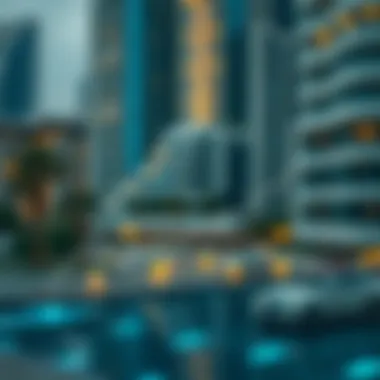

- Increased Focus on Sustainability: With increasing awareness about environmental issues, buyers are gravitating towards properties that adopt sustainable practices, like energy-efficient designs and green materials.
- Tech Integration: More buyers are opting for smart homes, showcasing a preference for properties where technology enhances daily living, whether through energy management systems or advanced security features.
- Mixed-Use Developments: There is a burgeoning interest in developments that combine residential, commercial, and recreational spaces, creating vibrant communities that encourage a live-work-play lifestyle.
Investment in reportage properties is not merely a financial decision; it reflects a lifestyle choice that balances aesthetic, comfort, and sustainability in urban living.
In summary, the demand for reportage properties is multifaceted and heavily influenced by shifting buyer demographics and evolving investment preferences. Stakeholders must remain alert to these trends, as aligning offerings with market demand can lead to fruitful outcomes for both buyers and investors alike.
Effects on the Dubai Real Estate Market
Understanding the effects of reportage properties on the Dubai real estate market is crucial for anyone interested in this dynamic sector. Dubai has rapidly evolved into a global hub for investments, and reportage properties are an integral part of its landscape. The growing popularity of these properties stems not only from their distinct architectural appeal but also from their alignment with modern buyer preferences and sustainability practices.
In this section, we will explore two key elements: the price trends and forecasts of reportage properties, and how these properties compare to traditional real estate. By shedding light on these aspects, stakeholders can make informed decisions that align with current market dynamics.
Price Trends and Forecasts
Recent data indicates an upward trajectory in the pricing of reportage properties within Dubai. This trend can be attributed to various factors:
- Increasing Demand: As more buyers seek out unique living experiences, the demand for reportage properties has surged. This rise in interest naturally drives prices higher.
- Location Advantages: Many reportage developments are strategically located near business districts or tourist attractions, enhancing their value.
- Sustainability Appeal: With a global shift towards eco-friendly living, properties that prioritize sustainable practices often command higher prices.
Forecasting the prices of these properties involves analyzing market behavior over the past few years. Potential indicators suggest that prices may continue to climb, particularly as Dubai positions itself for future growth. Investors should closely monitor market reports and local real estate trends to gauge the right investment temperatures.
"The Dubai real estate market is a fluid ecosystem. Understanding its nuances can mean the difference between thriving and merely surviving as an investor."
Comparative Analysis with Traditional Properties
When comparing reportage properties to traditional properties, several distinctions become evident:
- Architectural Innovation: Reportage properties often feature cutting-edge designs, standing in stark contrast to more conventional styles. This contributes to their appeal, especially among younger buyers.
- Community Environments: Many reportage developments incorporate community-oriented designs, fostering a sense of belonging among residents. Traditional properties might not offer this intimate community experience.
- Investment Resilience: While traditional properties have historically been considered stable investments, reportage properties are gaining recognition for their robustness in a fluctuating market. Their unique offerings can provide a safety net against economic downturns.
Regulatory Framework Governing Reportage Properties
The regulatory framework surrounding reportage properties is not merely a collection of rules; it fosters a structured ecosystem essential for both buyers and investors in Dubai's bustling real estate market. It ensures that the intricate web of transactions and ownership is transparent, sustainable, and beneficial for all parties involved. Without a solid regulatory backdrop, the market could slip into a state of chaos, filled with ambiguities and uncertainty. Therefore, understanding this framework becomes paramount for anyone looking to navigate this ever-evolving domain.
Local Real Estate Laws
The local real estate laws in Dubai establish the very groundwork that governs reportage properties. These laws are not set in stone; they evolve based on market demands and economic climates. They delineate ownership rights, zoning regulations, property transfers, and tenancy agreements. For instance, the Dubai Land Department (DLD) plays a pivotal role in ensuring that all transactions adhere to legal stipulations. It registers property transactions, facilitates dispute resolution, and serves as a repository for property-related documents.
A crucial aspect of these laws is the enforcement of property registration. In essence, any property transaction carries the weight of legal documentation, preventing disputes down the road. Imagine purchasing a property only to find out that the previous owner had unresolved debts tied to it. Local real estate laws are designed to mitigate such risks by enforcing clear titles and rights—the hallmark of a stable investment environment.
Moreover, understanding local laws can ripple positively through investment decisions. For example, certain zones might have benefits like tax exemptions or relaxed building regulations, appealing to astute investors looking to maximize their returns. This encourages developers to align their projects with local laws rather than working against them.
Impact of Regulation on Buyers and Investors
Regulation impacts buyers and investors in ways that stretch beyond mere compliance. Affirmative regulatory measures build trust, which is crucial in a market as dynamic as Dubai's. When buyers see active enforcement of regulations, it reassures them that their investments are protected.
Additionally, understanding these regulations can lead to better negotiation strategies. Consider a buyer aware that a developer has a limited timeframe to complete a project due to regulatory constraints. They might leverage this information to negotiate better terms. Thus, the regulatory landscape is not just about laws; it's an integral part of a strategic playbook for anyone engaged in real estate.
"An informed buyer is a powerful buyer."
Furthermore, investments made in compliance with these regulations generally experience less volatility. Investors can anticipate returns with greater confidence when they align their goals with the local law. In contrast, those who operate outside the framework risk not just legal ramifications but also the eroding of public trust and market stability.
Challenges in the Reportage Property Sector
The section on challenges in the reportage property sector holds significant weight in understanding the broader context of Dubai's real estate market. Recognizing these challenges is not just a matter of academic interest; it is essential for investors, developers, and other stakeholders aiming to navigate successfully through an often turbulent landscape. The scenarios faced by reportage properties go beyond mere property characteristics or buyer preferences; they dive deep into the economic, social, and regulatory upheavals that can cast long shadows over even the most well-laid plans.
Economic Fluctuations


From fluctuations in global oil prices to sharp changes in tourism trends, economic variability directly impacts the Dubai property market. Given its reliance on foreign investment, shifts in the global economy create ripples that can lead to sudden spikes or drops in property values. Investors must reckon with currency volatility, especially the strength of the UAE Dirham against other major currencies. If one is not prepared for these changes, financial loss is a very real possibility.
Moreover, potential buyers may hesitate to make purchases during economic downturns, leading to a reduced number of transactions. For developers, this can translate into longer selling times and increased costs associated with holding unsold inventory. Thus, having a robust understanding of current and projected economic conditions is paramount. Moreover, developing strategies to hedge against these fluctuations can be advantageous for those looking to invest in reportage properties.
"Economic agitations can create opportunities for savvy investors, but they also require vigilance and recalibration of expectations."
Navigating Buyer Expectations
It's not just the economics that present hurdles; understanding what buyers actually want can be an equally daunting task. Today's buyers often come with a checklist longer than a grocery list, seeking amenities that fit within their lifestyle choices. For instance, many are prioritizing eco-friendliness, smart technology, and open living spaces in their property searches. These preferences can change as quickly as the seasons, leading developers to wonder if they’ve hit the ever-elusive sweet spot or if they’re just missing the mark by a hair.
In addition, buyers may have unrealistic expectations concerning pricing. They might expect to find luxurious features at a bargain price, which keeps agents and developers on their toes. The challenge lies in managing these expectations while also creating properties that capture buyer interest. Some practical steps include engaging potential buyers early in the development process and actively seeking feedback through surveys or community consultation sessions. This does not just enhance the appeal of the property; it can lead to a more mutually rewarding experience for both buyers and developers.
By comprehending these elements—economic fluctuations and navigating buyer expectations—stakeholders in the reportage property sector can better arm themselves against potential missteps. Conducting thorough market research and maintaining flexibility in their strategic approach allows for adaptability in this dynamic, ever-evolving market.
In summary, challenges in the reportage property sector are multifaceted. The key to success lies in careful analysis and proactive decision-making; it’s a commitment to understanding nuances that can mean the difference between thriving or merely surviving. Whether one is a seasoned investor, a real estate agent, or a curious buyer, these challenges warrant careful consideration and strategic planning as they set the stage for the future of reportage properties in Dubai.
Future Outlook for Reportage Properties
The future of reportage properties holds significant promise for various stakeholders within Dubai's bustling real estate market. As urban landscapes evolve and the demands of buyers and investors shift, understanding future trends becomes crucial for making informed decisions. Reportage properties, characterized by their unique architectural styles and sustainable designs, are set to play a pivotal role in the market's progression. This section will delve into emerging trends and long-term implications, focusing on the benefits and considerations that come with these properties in the years to come.
Emerging Trends and Innovations
In the realm of reportage properties, it's essential to keep an eye on emerging trends that could shape the landscape for buyers and investors alike. Several noteworthy innovations are making waves:
- Sustainability Initiatives: Developers are increasingly adopting green building practices. This includes the use of solar panels, eco-friendly materials, and energy-efficiency designs. Not only do these features appeal to environmentally conscious buyers, but they also comply with Dubai's stringent regulations aimed at promoting sustainable development.
- Smart Home Technology: Integration of smart technology into residences is on the rise. The future will see more properties outfitted with intelligent systems for security, lighting, and climate control. These innovations not only enhance comfort but can also lead to long-term cost savings for homeowners.
- Flexibility in Design: With changing lifestyles, there's a growing demand for properties that offer flexibility in living spaces. Open floor plans that allow for multifunctional use are becoming more common. This trend caters to the varied needs of modern families and professionals.
- Experience-Driven Developments: More than just living spaces, upcoming projects aim to deliver comprehensive experiences. This includes mixed-use properties that integrate retail, leisure, and residential components, appealing to buyers looking for community engagement and convenience.
"The way we live and work is constantly evolving; therefore, the properties we invest in should reflect those changes."
Navigating these trends effectively will not only ensure the viability of investments but also align with buyer interests, creating synergies in the market.
Long-term Implications for the Dubai Market
As we examine the long-term implications of reportage properties, a few key considerations surface that will influence both the market and potential investors:
- Increased Competitive Edge: As more developers embrace unique architectural styles and sustainability, competition will intensify. Properties that fail to innovate may struggle to attract potential buyers. Hence, both new and existing developers will be compelled to elevate their offerings to stay relevant.
- Market Valuation Dynamics: With rising interest in sustainable living and community-oriented spaces, reportage properties are poised to increase in value over time. Investors may find that properties designed with foresight and innovation yield higher returns, both financially and in terms of buyer satisfaction.
- Regulatory Adjustments: As the market evolves, regulation will likely shift too. Authorities could implement new laws to better safeguard eco-friendly initiatives, meaning properties that comply with these regulations will hold greater desirability among discerning buyers.
- Global Investor Interest: The blend of luxury and sustainability in reportage properties may attract foreign investors. With Dubai positioned as a global hub, the influx of international funds could bolster property values and provide new opportunities for current market players.
In summary, the future of reportage properties within Dubai's real estate market is filled with possibilities. Awareness of emerging trends and understanding the long-term implications are essential for anyone involved in this space. By leveraging knowledge and foresight, stakeholders can make decisions that align with the evolving nature of the market.
The End
The conclusion of this article serves as a critical touchstone for understanding reportage properties within Dubai's unique real estate tapestry. The closing discussion aims to bring together the insights explored in this comprehensive review, ensuring the information not only resonates but also empowers various stakeholders engaged in this sector. The exploration of reportage properties highlights their multifaceted nature, illustrating how they differ from standard offerings in the market.
In summary, the segments that preceded this conclusion unravel the layers of architectural features, locational significance, and sustainability aspects, creating a diverse and intricate landscape for potential buyers and investors. As the market demand evolves, grasping these elements becomes essential for anyone looking to stake their claim in this burgeoning field. Understanding buyer demographics helps in recognizing who is investing in these properties. Additionally, the investment trends delineated earlier illuminate the paths that buyers might take.
A well-rounded conclusion should consider the myriad benefits of reportage properties: mutual community enhancement, economic growth, and unique innovative approaches to traditional real estate. Recognizing the momentum gained from these factors not only benefits investors and developers but also beautifies and enriches urban spaces, ultimately contributing to the vibrancy of the city.
Beyond the specifics of local real estate laws and economic fluctuations, the wrap-up also deliberates on the interplay between regulatory frameworks and market viability. Each of these aspects is a vital piece of the puzzle that informs real estate decisions in Dubai.
Summation of Key Insights
- Reportage properties have distinct architectural features: Their designs often reflect modernity with a local context, making them attractive to discerning buyers.
- Location matters: Properties in prime locations not only yield better returns but also attract a demographic that values lifestyle.
- Trend towards sustainability: There’s an increasing emphasis on environmentally conscious developments, making these properties appealing to eco-aware investors.
- Market demand is on the rise: Particularly among young professionals and high-net-worth individuals who prioritize innovative living spaces.
Final Thoughts on Reportage Properties
In closing, the exploration of reportage properties is not just an investment opportunity; it’s a chance to be part of a transformative era in Dubai’s real estate landscape. As trends unfold and innovations emerge, keeping a pulse on these dynamics is key. For buyers and investors, understanding the blend of community aesthetics and market trends can illuminate paths that align with long-term goals. The intricacies of the Dubai real estate market are not to be underestimated. Each layer, from regulatory influences to economic conditions, shapes the outcomes for those willing to engage in this sector.
Engagement with this market requires agility in thought and action. The final impressions laid here stress the need for continuous learning and adaptation. As the landscape evolves, so too should the strategies employed by developers, agents, and investors. Staying informed will invariably enhance their prospects in a competitive and nuanced environment.
"Navigating the complexities of reportage properties can yield outstanding rewards for those prepared to face the challenges head-on."
For further insights and in-depth discussions regarding the Dubai real estate scene, resources like Wikipedia, Britannica, and real estate forums on Reddit can provide valuable context and community support.











